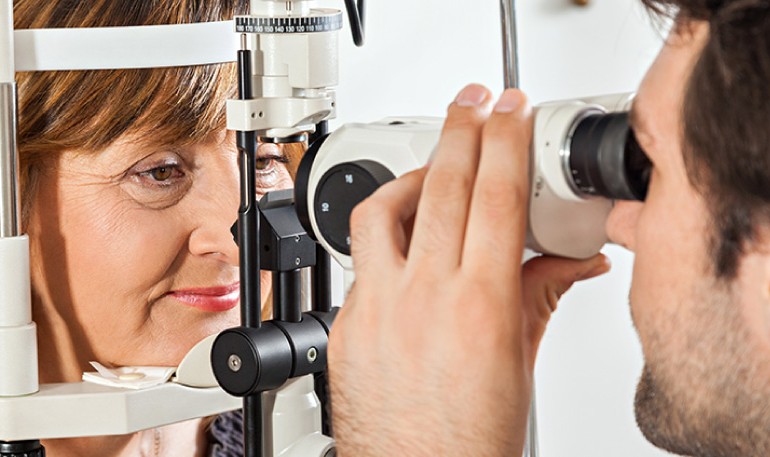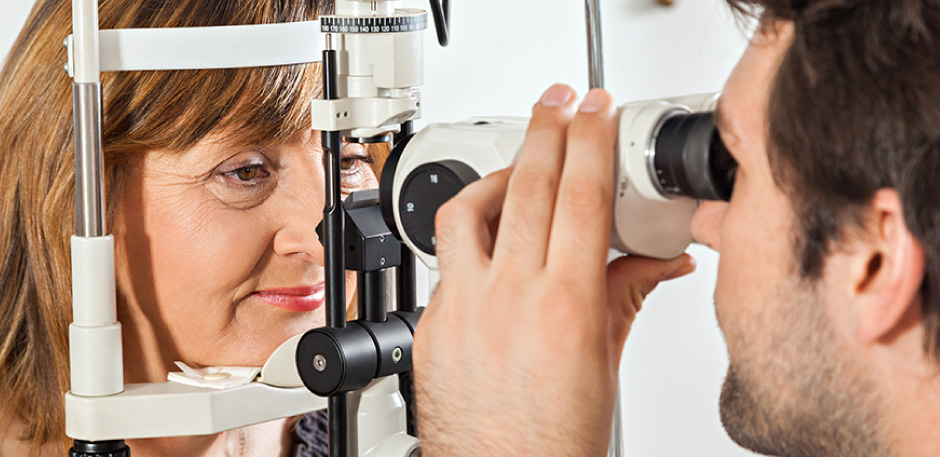Ophthalmology residency has officially started. Well, technically it started at the beginning of July, though the first two weeks were spent becoming (dis)oriented on how to use the electronic medical record, how to be compliant with hospital policies, and other mundane HR aspects of starting a new job.
This past week, however, was the first week of seeing patients full-time in the general ophthalmology clinic! All in all I saw probably a half dozen post-op patients, a dozen annual checkups for diabetic retinopathy, numerous patients with blepharitis, several with floaters, three with conjunctivitis, a few very interesting neuro-ophthalmology patients with ocular tumors, cranial neuropathies, and autoimmune disease, and a few with syndromes I had never heard of and did my best with the patients in clinic and then really learned about their conditions by reading at home.
Let me share with you a few of my struggles and one success from my first week in ophthalmology residency.
Struggles
The slit lamp – This instrument, invented in 1851 by Hermann von Helmholtz is essentially a fancy microscope with several dials and knobs that can be carefully adjusted to allow thorough examination of the eyes and surrounding structures. (A picture of the slit lamp biomicroscope can be seen above.) Here’s the problem. The clinic in which I am working has at least a half dozen types of slit lamps, and each has its own unique quirks. Some slide out on their own and can easily be adjusted, others swing down onto the patient’s lap, and another still is portable and allows for bedside examinations for hospitalized patients that cannot be seen in the eye clinic. This week alone I think I spent at least five minutes trying to figure out how to turn the slit lamp on with one patient, bonked two patients in the head awkwardly as I accidentally moved it toward them, and another still smacked her jaw uncomfortably when I pulled the instrument away and she was still resting her chin in the instrument. Needless to say, I need to figure out how to gracefully use this instrument, and I better figure it out soon! First item on my to-do list for this week is to practice using all the variations of slit lamps in the examination rooms BEFORE the patients arrive.
The clinic lights – Have you ever noticed the different colored lights, rows of flags, or signs that hang outside each examination room? These lights are for clinic staff to maintain an efficient workflow and have some idea of who has been seen by a nurse/tech, who is dilating, who is getting photos, OCT, or visual fields taken, and who still needs to be seen by the doctor. Yes, I have an undergraduate degree and a doctorate degree, but I still cannot seem to figure out this flag/lights system! At least ten times this past week the physician with whom I am working had to pop his head into the exam room and turn off the yellow light and on the green and white light because I had forgotten to do so. Not to mention the fact that every doctor in every clinic has their own system, which only further complicates my struggle. Second goal of the week – master the clinic workflow lights/flag system.
Normal variant or pathologic? Imagine when you were a toddler learning the different colors of fruits. Over time you learned that apples come in shades of green and assumed this to be the standard until someone showed you a red apple. Your understanding for what was an apple suddenly changed. You then came to recognize a green or red apple as delicious, and also learned that a brown apple would not be delicious. In much the same way, ophthalmology as a specialty is all about pattern recognition. Until you have seen hundreds of variations of normal cornea/lens/retinal tissues, you have little understanding for what is normal and what is abnormal. As a new resident I am still learning about green apples and feel far away from picking up on the subtleties of brown, diseased apples and their corresponding ophthalmic pathologies. Fortunately, I never feel left alone to make a diagnosis of normal/diseased on my own and always have the supervision of an experienced attending physician. In these upcoming weeks I will continue to go through an ophthalmology images atlas both in print and online to continue to differentiate normal variation from disease.
Drinking from a firehose! From time to time you may hear someone say they are learning as if “drinking from a firehose.” Even more so than during my internship, residency is already beginning to feel like such a beverage. I expected this to be the case, but what I did not expect would be that it wouldn’t be just one firehose spraying knowledge at a sometimes-painful rate of speed and volume but that I would be getting hosed down from multiple firehoses all at once! Between morning rounds, daily clinic, subspecialty rounds, research rounds, basic science lectures, and personal study, and opportunities to present at each of these events, the educational opportunities are not only ample, they are at times overwhelming! I am realizing that to be a successful resident I am going to need to be disciplined in my personal study, wise in my lecture attendance, and efficient in time management.
Success
The text page that made it all worth it – On Wednesday morning, in the midst of struggling with my nemesis the slit lamp, my failure with the clinic workflow lights, my search for bad apples in the clinic orchard, and feeling water-logged from learning I received a much-needed encouraging message, which came in the unexpected form of a text message on the emergency pager I carry with me all the time. The text page was from an employee of our eye clinic whose sister was a patient of mine the prior day. The page simply read, “My sister was very happy with the care you provided yesterday.” In those eleven words, this employee (whom I have yet to meet) made my first-week of residency struggles all worth it. I may struggle with systems and I may still be learning the kindergarten basics of ophthalmology, but as long as my patients know I care, all the struggles will be worth it, both right now and hopefully for many years to come.
What memorable struggles did you have when you first started residency or when you started a new job?
What advice do you have for handling the firehose of information that faces new residents?













I also started my ophtho residency this month. I was doing my first intravitreal injection after watching several during injection clinic and explained every step in incredible detail to my senior resident prior to him allowing me to do the next injection. I set up my sterile tray perfectly, I prepped my patient, I marked where I would inject and picked up the needle. Somehow I managed to drop the needle of Lucentis onto the floor! For those of you who are unfamiliar with this drug, please look up how much each injection of less than 1cc of this medicine costs. My heart sank. Literally sank to the floor…right next to the syringe filled with this expensive medication!
But the next injection went much better and hopefully I’ll never make that ($2,000) mistake again. (Yikes!!)
Ps. I’m really grateful this post is anonymous
This was fun to read because it reminded me so much of my first week working as a dietitian on the BMT floor. I was fresh out of school, and despite really wanting to working in Oncology I didn’t have any idea what I had gotten myself into. I had just taken over the most difficult floor of the hospital with basically no experience. Despite taking medical terminology and doing several other clinical rotations, the first time I attended rounds I felt like I had transported to another country and didn’t speak the language. They had their own set of abbreviations not used in any other area of clinical practice that I had never heard before and I had no clue what they meant. The BMT team dealt with patients with so many different forms of cancer and it made me think of your apple analogy. For me the problem was there were about a dozen or so varieties of apples but I knew nothing about what made each of them unique, I just knew they were all apples. It took weeks of research on my own, listening intently during rounds, and asking questions when I had the opportunity to finally understand what I was dealing with. It took far longer to finally feel comfortable making recommendations during rounds as I worked to develop the clinical experience I needed. Unfortunately for me, I really didn’t get training because the previous experienced dietitian had left the job months before I started, and so I had no one to guide me, I was basically on my own. I have discovered that sometimes learning by “being thrown into the fire” isn’t always bad as it made me take complete responsibility for my own learning. While the fire hoses are helpful to put out the fire, sometimes I still wondered if I going to drown in the process. I still remember the first patient I really made a difference with, and that is when I knew that all the struggles I had gone through had been worth it. There have been hundreds of patients like that one since then and I can definitely say that is what makes all the other difficulties of the job worth dealing with.
It is interesting looking back now after seven years. I have become an expert in my area and am now teaching others what I know (precepting and doing lectures for other dietitetic students, training new dietitians, and even implementing new protocols) but I will never forget those early days on the job and what it taught me. Before you know it, you will be the experienced doctor that others look up to and rely on for your expertise!
Ginger – Thanks for your thoughtful reply. I’m glad you enjoyed the post. Sounds like you have gone from knowing little about your field (dietetics) to being quite proficient and expert, even to the point of teaching others your craft! Well done!